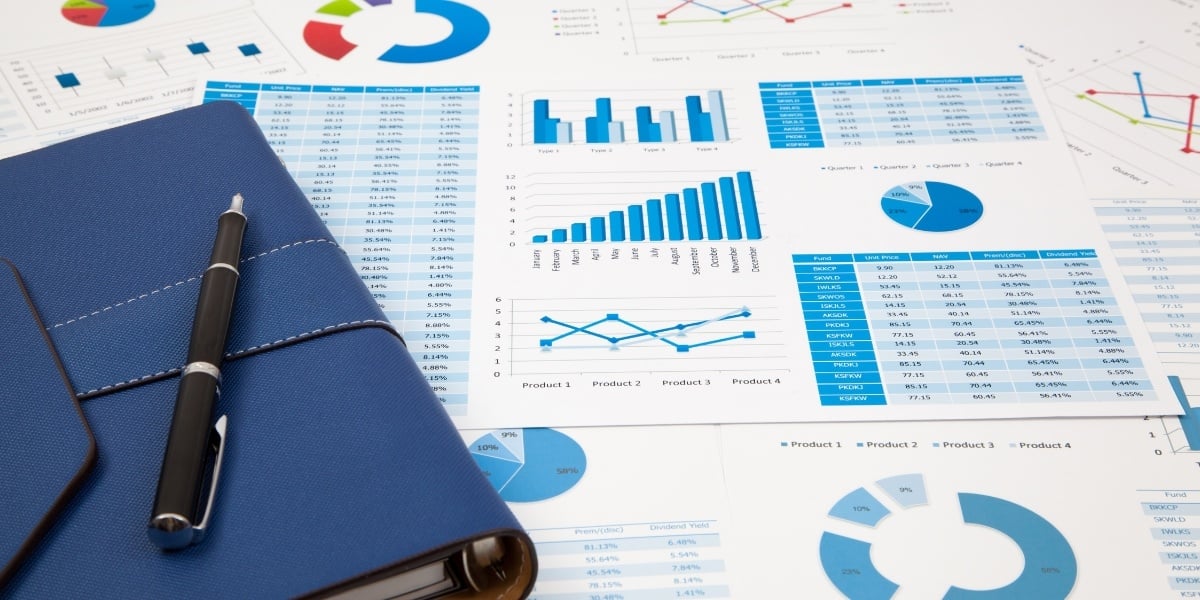Help Isom IGA recover from devasting floods

4 min read
Can Data Analysis Really Identify Which Marketing Resonates With Shoppers?
Written by John Ross
Jun 12, 2024
Many years ago, when I was running marketing for a large public chain, we did a huge analytics program to try and figure out where we got the highest lift from our advertising spend. Outside consultants and our own internal analytics teams scoured through two years of historical data, including media type (print, radio, TV, etc.), spend, and sales results.
We also dropped in economic data, housing data, interest rates and gas prices — all the various data sources that might explain why sales were up or down. We didn’t want to fall into the trap of assuming that our marketing was driving all the good results — or that weather was to blame for the bad results.
When it was done we had these beautiful charts and graphs — hundreds of pages of data and a very pretty PowerPoint. Which of course we showed to the CEO, proclaiming, "Look, what we do works!"
To which he said, “You don’t really believe this, do you?”
“I sure do,” I said. “We used multivariate analysis, which is a powerful statistical method to examine multiple variables to understand their impact on a specific outcome. This technique is crucial for analyzing complex data sets and uncovering hidden patterns across diverse fields such as weather, competitor activity, marketing mix…”
But the more I spoke, the more his eyes glazed over. He wanted simple answers to simple questions: When the weather gets hotter, do we sell more soft drinks because of the temperature or marketing? Specifically, he was asking, “Can I cut your budget on soft drinks since we are going to sell them during the summer no matter what?”
In the end, we used that data to change our marketing mix, and as a consequence, sales in the total chain grew. A year later when we were looking at our performance, my statistical analysis didn’t save me from the merchants claiming their deals were what drove sales, or the operators saying their improved customers service was the root cause of our success.
That was the plight of a marketer 20 years ago. Today, we have more data, more tools, and more sophistication than we did back then. And still, on a weekly basis, it is hard to know if sales were up or down for the weekend because of your ad, weekly deals, or the weather.
Today's Data Analysis
So today, how would you figure this out? You could call a big consulting company to do what we did then. You could install one of the many powerful analytics products to help you analyze results and make good judgements. You could hire your own mathematicians and statisticians and set them to work analyzing your data to advise you going forward.
Or, you could just ask your own data questions. In plain English. In real time.
“Hey ‘Data.' Did we sell more soft drinks last weekend because shoppers responded to our sale items or because it was a hot weekend?”
Wouldn’t that be cool?
This, at its core, is the big promise for retailers on the application of natural language processing. The media calls it Artificial Intelligence, or AI.
It can be confusing to know what AI really is, or how it works. My advice to retailers is to learn all you can, but not get caught up in the mechanics. In fact, ignore how it works for a moment and instead write down the questions you’ve always wanted to ask, and the answers you hope to get. Here are some examples:
- “When should I promote seasonal products to get the highest lift?”
- “What is the optimal discount amount for high volume items to generate more store traffic?”
- “What items offer the best opportunity to increase basket amongst my most frequent shoppers?”
Now imagine that you could just type that into your laptop — or even speak it into your mobile phone — and get an answer back in seconds.
Assuming you have the right data, and that data is accessible, then these large language model AI tools can give you just that sort of power. And they can do it at speed.
The real answer to my question on soft drinks?
“About a third of total category lift can be attributed to weather effects, using a combination of time/seasonal sensitive analysis and regression analysis. Warmer than average daily temperature will drive incremental sales, over and above the baseline set by the strength of the weekly promotional discounts in the category. Interestingly, cooler than average temperatures do not seem to hurt summer soft drink sales, although daily precipitation extremes relative to norms are a major factor in daily sales.”
So what does it mean? Marketing still matters through the key summer selling season, hotter temperatures will drive even more sales, though cooler temperatures won’t hurt. But too much rain can truly blunt even the best marketing and offers.
One potential action: build a strong summer marketing campaign, pay attention to weekly rainfall, and use quick response digital marketing to turn your spending off when big storms are predicted. Display ads on the weather channel app can be made to do this for you!"
As owners, store managers, and department heads, we don't need to be data analysts to get answers to key questions. We don’t need a big statistics team or a score of data analysts. AI promises grocers the real opportunity to interact with their data, in real time, and get answers back that they can actually use — and at a price retailers can afford. But as important, the technology can be deployed deep into our organizations and accessed by their mobile phones, so that the associates on the line, in the warehouse, and in merchandising are getting the answers they need when they need them.
Want to learn more? Check out the summer National Retail Federation conference on retail technology, NRF Nexus, on July 15-17. Another great opportunity is BRdata’s fall conference, BRdata World, September 29–October 3, which specifically focuses on AI solutions for independent grocers.
Learn as much as you can now. Talk to other retailers who are already using it. And then ask how you can begin to experiment with these new tools to get practical answers that can improve performance. I think you will be surprised how much you can do and how powerful these new tools have become.
Next Story
McKim’s IGA Works to End Summer Hunger →
You May Also Like
These Stories on From the Desk of
Dec 18, 2025 9:32:36 AM |
3 min read
Dec 10, 2025 4:57:50 PM |
1 min read


No Comments Yet
Let us know what you think